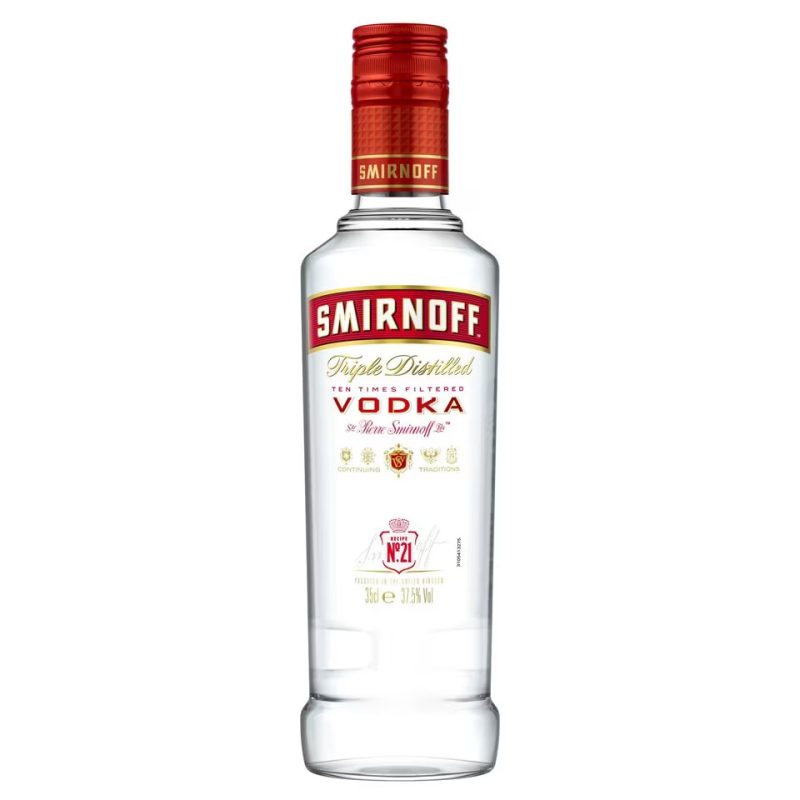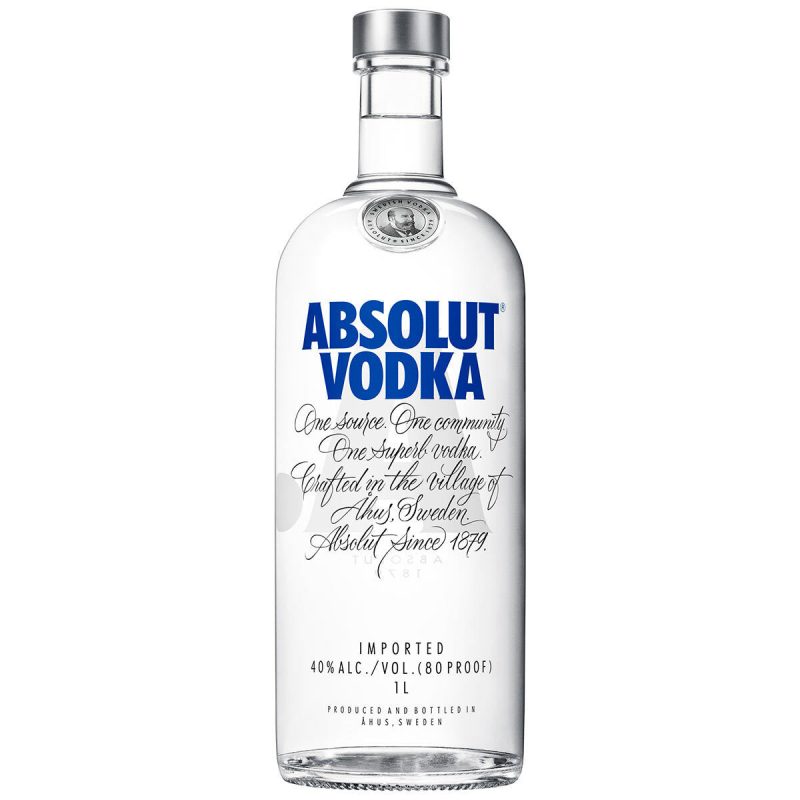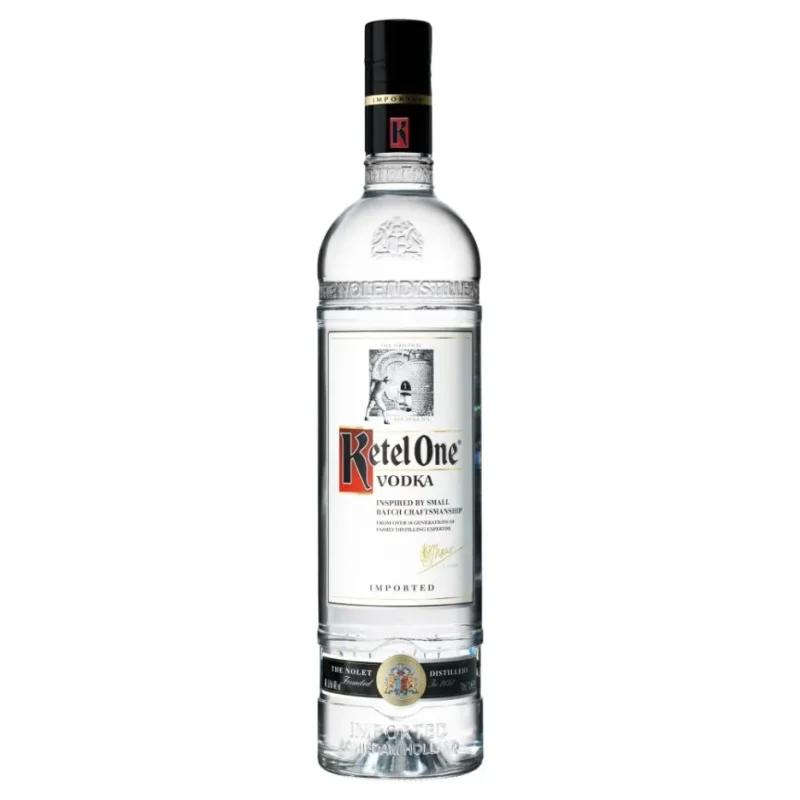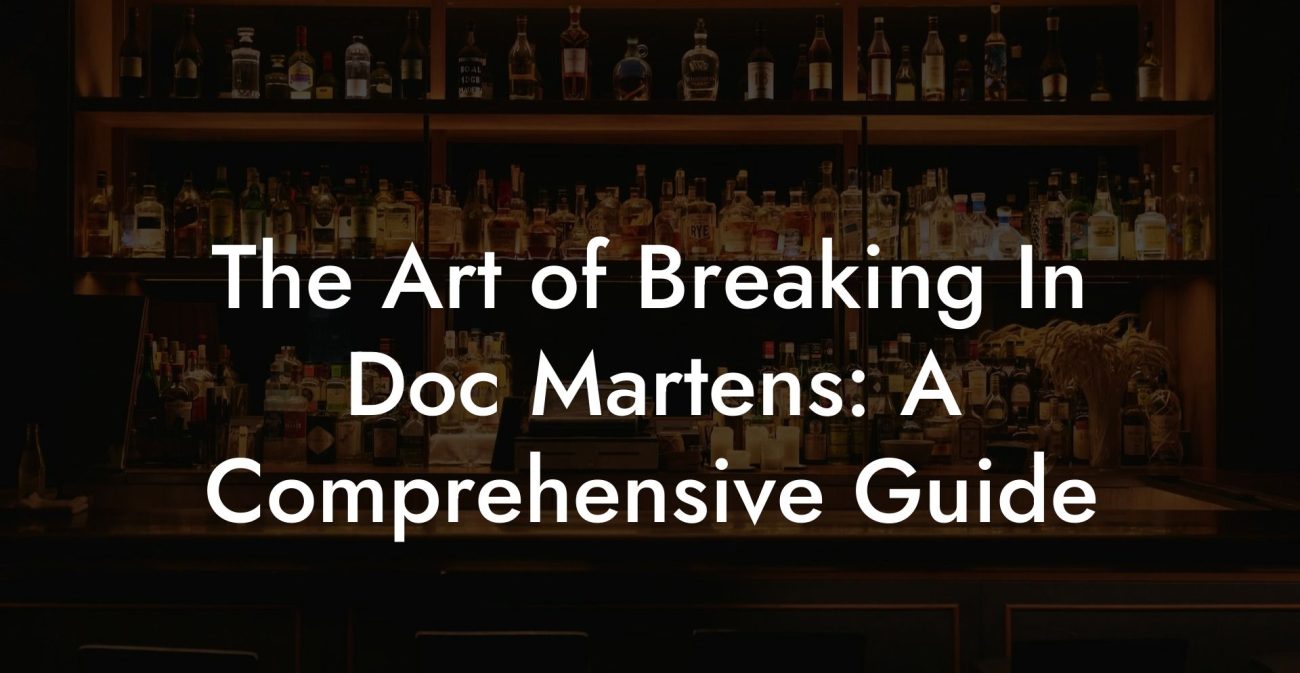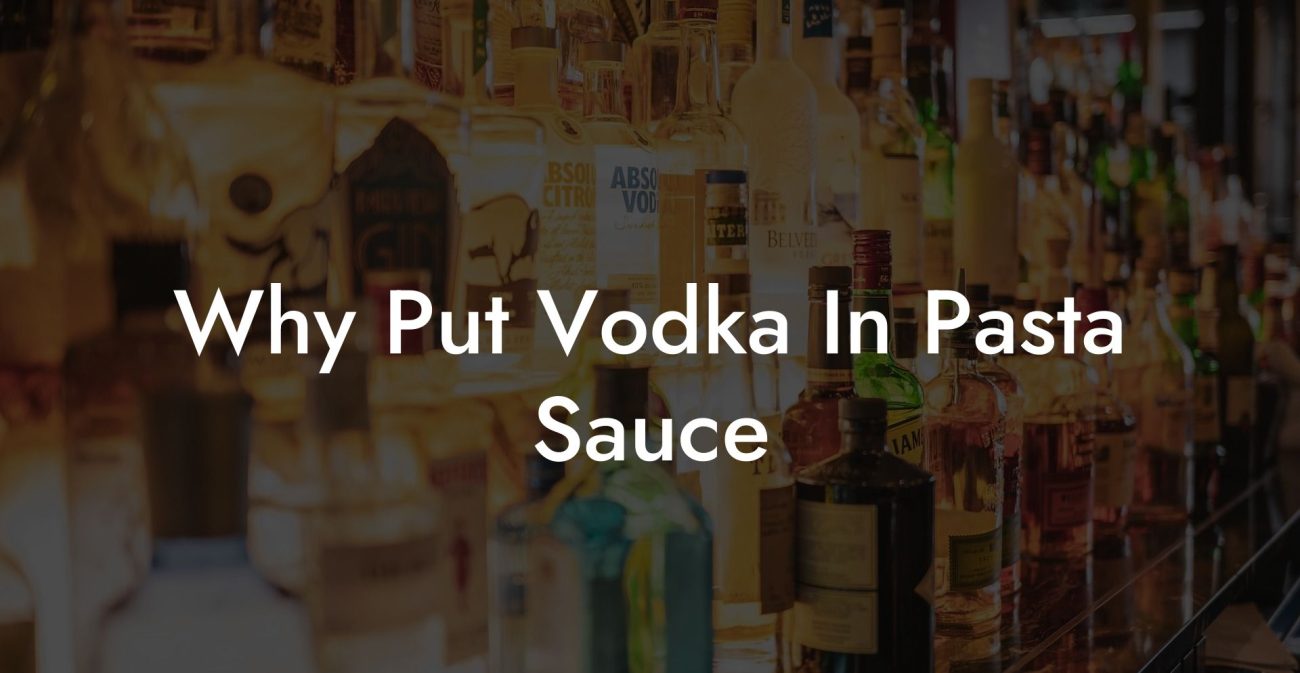Ever wondered how to transition from your quirky kitchen experiments to crafting your very own liquid masterpiece that gets the party started? Welcome to the ultimate guide on How Make Vodka—a deep dive into the art and science of vodka-making that’s equal parts fascinating, fun, and full of unexpected twists. Whether you’re a curious millennial looking to impress your friends or a Gen Z DIY enthusiast eager to learn the intricacies of craft distillation, buckle up for a wild ride through history, chemistry, craft techniques, and a dash of humor.
How Make Vodka Table of Contents
The Vodka Vibe: What Exactly Is Vodka?
Vodka’s Backstory: A Spirited History
The Science and Art of Vodka-Making: An Overview
Ingredients That Ignite the Spirit: The Vodka Base
Essential Equipment: Tools of the Craft
The Fermentation Fête: Turning Sugars Into Spirits
Mastering Distillation: From Mash to Magic
Filtration and Dilution: The Finishing Touches
Flavoring and Experimentation: Adding a Personal Twist
Legal Considerations and Safety First: DIY Vodka at Home
Vodka in the Modern World: Trendy Serving Ideas
Historically-Inspired Vodka Recipes: Rooted in Tradition, Elevated by Innovation
Resources and Community Support: Your Next Steps
Elevating Your Craft: Continuous Improvement and Experimentation
Integrating Technology: The Modern Distiller’s Edge
Celebratory Moments: Toasting Your Success
Vodka-Making Myths Debunked: Separating Fact from Fiction
Expert Tips and Tricks for Successful Vodka Crafting
Vodka Pairing and Beyond: Exploring the Culinary Angle
FAQ: Your Vodka-Making Questions Answered
Your Journey Into Vodka-Making Awaits
Looking For The Best Vodka? You'll Love These Vodka Guides...
The Vodka Vibe: What Exactly Is Vodka?
Vodka—a word that conjures images of sleek, crystal-clear liquid and endless nights out with friends, but there’s so much more beneath the surface. At its core, vodka is a neutral spirit, refined to an almost ethereal purity. Unlike other spirits that flaunt bold flavors, vodka’s charm lies in its versatility and clean canvas quality, which makes it the perfect base for a myriad of cocktails.
Think of vodka as the blank page of the alcohol world. It’s a spirit that can be enjoyed straight up in a chilled shot or transformed into a zesty cocktail sensation. But before you sip on that perfectly balanced martini, let’s venture into the secrets behind its creation.
In essence, vodka is the result of a meticulous process where fermentable ingredients are turned into alcohol and then refined to remove most of the flavor impurities. The magic happens through fermentation, distillation, and rigorous filtration. In other words, it’s a journey from a humble mash to an ultra-smooth elixir—an alchemical process that bridges ancient traditions with modern distilling know-how.
Vodka’s Backstory: A Spirited History
Vodka’s origins are as murky as its once-secret recipes. While many claim its roots stem from Eastern Europe, with Russia and Poland both laying claim to its invention, the spirit’s journey is a tale of cultural exchange and continuous innovation. Historical records hint at early vodka-like concoctions used for medicinal and ceremonial purposes, evolving over centuries into the refined spirit we know today.
Imagine a time when vodka was more of a local brew, enjoyed by villagers during cozy winter nights and festive gatherings. Fast forward to the present, and vodka has become a global phenomenon—an icon of both high-end mixology and casual get-togethers. This evolution is a testament to vodka’s amazing adaptability. It evolved from a rustic beverage into a modern classic without losing its edge.
Best Budget Vodkas Ranked
The transformation in vodka-making methods tells a story of innovation and perseverance. Modern distillers combine tradition with cutting-edge science to produce a spirit that appeals to both purists and trendsetters alike. Today’s vodka is celebrated for its purity and smooth finish, and its production is as much an art as it is a scientific achievement.
The Science and Art of Vodka-Making: An Overview
Creating vodka is a multi-stage process that is equal parts chemistry, art, and a hint of rebellious experimentation. In simple terms, it all starts with some ingredients, a bit of fermentation magic, and the ever-important process of distillation. But there’s always more than meets the eye:
- The Base: The journey begins with selecting the right base material. Vodka can be made from a variety of sources including grains like wheat, rye, and corn, or even from potatoes, grapes, or sugar beets. The quality and character of your base ingredient set the stage for the type of vodka you’ll eventually create.
- Fermentation: This is the time when yeast is invited to the party. The base ingredient is fermented, converting sugars into alcohol. Think of it as a biological rave, where the yeast works overtime to produce that much-coveted alcohol.
- Distillation: Once fermentation is complete, the liquid undergoes distillation—a process that uses heat to separate alcohol from water and other impurities. This step is repeated multiple times to achieve that signature purity.
- Filtration and Dilution: Even after distillation, vodka isn’t quite ready for its close-up. It’s carefully filtered through materials like charcoal to remove any remaining impurities, and then diluted with water (sometimes purified or even spring water) to reach the desired alcohol level, usually around 40% ABV.
Each of these steps is an intricate process requiring precision and care, but also a sense of creative freedom—an artistry that invites distillers to experiment and innovate.
Ingredients That Ignite the Spirit: The Vodka Base
The foundation of every great vodka is its base. Choosing the right source is pivotal, and the options are as diverse as the playlists on your favorite streaming app.
Grains: Traditionally, vodka made from grains like wheat, rye, or barley boasts a crisp, clean flavor that lends itself well to a variety of cocktails. Grain-based vodkas often appeal to those who prefer a more neutral spirit that doesn’t overpower other flavors.
Potatoes: For a richer, creamier profile, potato vodka is the go-to. This type typically has a slightly earthier taste, perfect for sipping neat or using as a base for sophisticated cocktails.
Sugar, Fruits, and Even Grapes: Some innovative producers opt for sugar-based bases or even fruit-derived sugars. These alternatives can add unique twists to the flavor profile and are a fantastic playground for creative experimentation.
The key is in understanding that your chosen base ingredient influences not just the flavor but also the texture and mouthfeel of the final product. A well-selected base provides the ideal blank canvas, ready for the alchemy of fermentation and distillation.
Most home experimenters lean towards readily available grains or potatoes, but if you’re feeling adventurous, exploring less conventional choices might just set your vodka apart from the rest!
Essential Equipment: Tools of the Craft
Before you embark on your vodka-making journey, it’s time to gather your gear, and no, you don’t need a mad scientist lab—just some reliable equipment.
- Fermenter: A large, food-grade container with an airlock is essential for fermenting your base. This is where yeast works its magic, so cleanliness and proper ventilation are key.
- Distillation Apparatus: A still (or a couple of them for a multi-stage process) is at the heart of production. Whether you're using a pot still or a column still, the right apparatus will help you separate alcohol from unwanted impurities.
- Filters: Charcoal filters and other purification media are crucial to stripping away leftovers that might spoil the taste. This step is all about refinement.
- Thermometers and Hydrometers: Precision matters! Accurate temperature readings ensure proper fermentation and distillation, and hydrometers measure the alcohol content as you go.
- Collection Vessels and Bottles: After all the hard work, you’ll need quality containers for collecting, storing, and ultimately serving your vodka.
Investing in good equipment not only makes the process smoother but also elevates your final product. Plus, it doesn’t hurt to feel like a high-tech mixologist in your own kitchen.
The Fermentation Fête: Turning Sugars Into Spirits
Fermentation is arguably one of the most exciting parts of the vodka-making process. It’s the stage where yeast is introduced to your chosen sugar source, feasting on the sugars and releasing alcohol and carbon dioxide as by-products. Think of it as nature’s own party—one where the main act is alcohol production!
Here’s what you need to know about fermentation:
- Choosing Your Yeast: The type of yeast you select can significantly impact the final flavor and smoothness of your vodka. For a clean, neutral profile, distillers often prefer neutral, high-alcohol tolerance strains.
- Optimal Environment: Temperature control is crucial during fermentation. Most yeast strains thrive between 20°C to 30°C (68°F to 86°F). Consistent temperature ensures steady fermentation, leading to a predictable alcohol yield.
- Fermentation Time: Depending on your base material and yeast type, fermentation can take anywhere from a few days to over a week. Patience is key—rushing this stage might result in off-flavors or lower alcohol yield.
- Monitoring Progress: Keep an eye on the specific gravity using a hydrometer. This simple tool lets you track the conversion of sugars into alcohol and determine when fermentation has reached its peak.
As you observe your fermenting mash bubble away, remember that this stage is fundamental to creating a high-quality vodka. Every bubble is a microscopic party in honor of your soon-to-be spirit.
Mastering Distillation: From Mash to Magic
With fermentation complete, it’s time for the real wizardry of vodka-making: distillation. This process is all about heating your fermented mash to separate alcohol from water and unwanted impurities. It’s like the ultimate science experiment—with a boozy twist.
Why Distill?
The goal of distillation is to concentrate the alcohol and remove those pesky flavors and compounds that can rob vodka of its signature smoothness. In vodka, less is more; you want purity without any guesswork.
How It Works:
Distillation relies on the different boiling points of alcohol (around 78°C or 173°F) and water (100°C or 212°F). As you heat your fermented mash, alcohol vaporizes first. This vapor is then condensed back into liquid form, resulting in a stronger, cleaner spirit.
Multiple Passes:
Many master distillers perform repeated distillations to achieve the desired purity. With each pass through the still, the liquid becomes smoother, more refined, and more suitable as a canvas for your future cocktail creations.
Safety Tips:
Distillation involves working with flammable substances and high temperatures. Always operate in well-ventilated environments, use quality equipment, and strictly adhere to safety guidelines. It’s a thrilling process, but exceptions for precautions are non-negotiable.
Filtration and Dilution: The Finishing Touches
Once you’ve distilled your nascent vodka into a concentrated spirit, the next step is all about refinement. The raw spirit is often too potent (and sometimes a bit rough around the edges), so it must be filtered and diluted to achieve that silky finish synonymous with quality vodka.
Filtration:
Using charcoal filters or other filtration media, distillers remove residual impurities. This process is like giving your vodka a spa day—detoxifying and smoothing away any rough patches.
Dilution:
Vodka is typically diluted with water to reach the target alcohol concentration, often around 40% ABV. The type of water you choose—be it purified, distilled, or even mineral-rich spring water—can subtly affect the final taste and mouthfeel.
Together, the filtration and dilution steps ensure that the spirit not only packs a punch but does so with grace and elegance. It’s the final ritual that transforms your raw distillate into a ready-to-drink masterpiece.
Flavoring and Experimentation: Adding a Personal Twist
While traditional vodka prides itself on neutrality, the modern craft spirit scene is all about personalization. Once you have your well-refined base, you can experiment by adding subtle flavors or even infusing your vodka with hints of fruit, herbs, or spices.
Infusions:
Leave in fresh ingredients like cucumber slices, lemon peels, or even jalapeños for a spicy kick. The infusion process is both an art and a science—experiment with varying durations to capture the perfect balance of flavor and aroma.
Natural Additives:
Consider using natural flavor extracts or even a tea infusion. Each addition has the potential to elevate your vodka by either complementing its intrinsic smoothness or creating a signature flavor profile that’s uniquely yours.
Blend and Balance:
Remember that less is often more. The goal is to enhance the experience without overpowering the clean character of your vodka. This step is where creativity meets restraint—an experimental playground for the modern mixologist.
In today’s era of customization, your homemade vodka can be as unique as your Spotify playlist. Let your taste buds be the guide and feel free to experiment until you discover that perfect, signature twist.
Legal Considerations and Safety First: DIY Vodka at Home
While the idea of making vodka at home is incredibly appealing, it’s important to note that distillation is a regulated process in many regions. Before you embark on your DIY vodka adventure, perform some due diligence:
- Check Local Laws:
Many countries and states have strict regulations regarding alcohol production. Ensure you understand and comply with all legal requirements to avoid any unwelcome surprises. - Safety Equipment:
Distillation involves flammable vapors and high temperatures. Make sure your equipment is in good working order, and always prioritize safety by working in a well-ventilated space and having fire-extinguishing measures handy. - Quality Control:
Investing in proper equipment not only produces a higher quality spirit but also minimizes risks associated with impurities.
Home distillation for personal consumption is a serious undertaking—thoroughly research and, where necessary, obtain the correct permits. The thrill of creating your own vodka should always be balanced with responsibility and caution.
Vodka in the Modern World: Trendy Serving Ideas
Now that you’ve learned the nuts and bolts of making vodka, let’s talk about enjoying it! Vodka’s versatility means it can be enjoyed in countless ways, transforming even the most mundane evening into an unforgettable experience. Here are a few trendy serving ideas that resonate with our millennial and Gen Z cohorts:
The Classic Cocktail Revival
Reinvent your favorite classics with a twist. Whether it’s a revamped Bloody Mary using garden-fresh herbs, an inventive Moscow Mule served in a copper mug, or a sleek vodka martini with a touch of artisan bitters, creative cocktails allow you to showcase your handcrafted spirit.
DIY Mixology at Home
Impress your friends by hosting a mixology night. Set up a mini bar with your homemade vodka, a selection of fresh fruits, and artisanal mixers. This is your chance to experiment with flavor combinations that reflect your personal style.
Neon Ice Lollies and Frozen Treats
For those warmer days when sunshine and a spa vibe call your name, use your vodka to create frozen cocktails or even boozy popsicles. Not only does it cool you down, but it also adds an extra layer of fun to summer parties.
Custom Vodka Tastings
Organize a tasting session with friends where you sample different infusion variations of your homemade vodka. Pair your rigors with a carefully curated playlist, quirky conversation, and a welcoming atmosphere of experimentation.
These creative twists on serving vodka provide an immersive experience, celebrating the spirit as both a personal craft and a communal celebration. Whether it’s a casual hangout or an upscale event, your vodka becomes the centerpiece of memorable moments.
Historically-Inspired Vodka Recipes: Rooted in Tradition, Elevated by Innovation
The roots of vodka are steeped in tradition, yet modern distillers continue to push boundaries, blending age-old recipes with innovative techniques. Let’s explore a couple of historically inspired recipes that you can try at home:
Old-World Rye Vodka
Rye vodka has a storied past in Eastern Europe. Start with a hearty base of rye grains, ferment generously with a neutral yeast, and distill carefully. Post-distillation, run your spirit through a charcoal filter to achieve that pristine clarity. The result is a vodka with just a slight hint of the earthy rye—a classic nod to tradition yet polished for the contemporary palate.
Rustic Potato Vodka
Bringing together the robust flavors of potatoes with the refined spirit of vodka yields an unforgettably creamy infusion. Use quality potatoes, ferment until the sugars are transformed into alcohol, and subject the mash to a meticulous distillation process. Filter diligently, dilute as needed, and finally, consider a light infusion of herbs such as dill for a unique, rustic twist that surprises your taste buds.
These recipes highlight that while the processes remain rooted in tradition, there is ample room for creativity. Experiment, compare notes, and let historical inspiration guide you to a spirit that’s distinctively yours.
Resources and Community Support: Your Next Steps
Embarking on the vodka-making journey can be as thrilling as it is challenging. Luckily, there’s a wealth of resources and a vibrant community of fellow enthusiasts who are more than willing to share their tips, tricks, and personal anecdotes.
Online Communities and Forums:
Dive into dedicated online platforms where hobbyist distillers and craft spirit aficionados gather. Reddit communities, Facebook groups, and specialized forums offer tons of hands-on advice, troubleshooting tips, and creative inspirations.
Workshops and Local Classes:
Look for local distilling workshops or courses that provide a structured environment for learning. These classes often cover not only the technical aspects of distillation but also the regulatory and safety issues that are paramount to home vodka-making.
Books and Journals:
There is no shortage of literature on the subject, from in-depth guides on fermentation science to memoirs of craft distillers. These resources can offer valuable insights into both the art and science behind every successful batch.
Professional Consultation:
Consider reaching out to experts in the field if you’re serious about refining your technique. Many seasoned distillers offer mentorship, online consultations, and even personalized advice tailored to your setup and goals.
By connecting with these communities and resources, you not only expand your technical know-how but also join a movement of creative spirit makers who defy convention. The journey is as much about learning as it is about sharing, and your next great batch might just be one conversation away.
Elevating Your Craft: Continuous Improvement and Experimentation
Like any art form, creating great vodka is a journey of constant evolution. Even if your early batches aren’t liquid gold, each attempt offers a learning opportunity—a chance to tweak your process and elevate your craft.
Embrace failure as a stepping stone to success. Write down notes, analyze what went right (and what didn’t), and adjust your techniques for the next batch. Whether it’s experimenting with new yeast strains, trying out unconventional base ingredients, or fine-tuning your distillation equipment, continuous experimentation is essential.
Strive for excellence with each endeavor, and remember—the best distillers are both meticulous scientists and creative artists at heart. Celebrate your progress, share your breakthrough moments with your community, and know that every batch brings you one step closer to vodka perfection.
Cheers to the spirit of innovation and the joy of crafting something uniquely your own!
Integrating Technology: The Modern Distiller’s Edge
In an age where smart technology reigns supreme, even vodka-making has come to benefit from digital advancements. With monitoring apps for tracking fermentation, automated distillation systems, and even IoT-enabled equipment that sends alerts straight to your phone, contemporary distillers are leveraging technology to optimize every step of the process.
Imagine being able to track the temperature and specific gravity of your fermenting mash in real time, or troubleshooting your still’s performance through detailed analytics. These innovations not only enhance safety but also ensure that you’re able to produce consistently high-quality vodka. For the tech-savvy distiller, these tools transform the process from guesswork into an artful blend of technology and tradition.
Embrace these tools, and let innovation propel your craft to new heights. The fusion of modern tech with historic distilling methods is a match made in heaven—and a cocktail of precision and creativity.
Celebratory Moments: Toasting Your Success
After laboring over meticulous fermentation, multiple distillations, and countless experiments, it’s finally time to savor the fruits of your labor. Your homemade vodka isn’t just a spirit—it’s a testament to your curiosity, dedication, and creative flair.
Whether you enjoy it neat, craft an iconic cocktail, or infuse it with your own signature twist, every sip is a celebration. It’s the perfect moment to gather friends, revel in your achievement, and toast to the journey of making something extraordinary from scratch.
And remember: every great bartender and mixologist started somewhere. Today, you’ve taken the first bold step in crafting a spirit that’s uniquely yours. Here’s to the endless nights of experimentation, laughter, and the joy of discovery.
Vodka-Making Myths Debunked: Separating Fact from Fiction
Along the journey of vodka-making, you may hear a fair share of myths and misconceptions. Let’s debunk a few:
-
Myth 1: Vodka must be flavorless.
Fact: While a neutral profile is classic, vodka’s charm lies in its versatility. Subtle flavors can be introduced through erosion of impurities, resulting in a spirit that is both smooth and characterful. -
Myth 2: Only expensive equipment yields good vodka.
Fact: Home distillers have achieved great success with modest tools and a lot of ingenuity. It’s the understanding of the process and attention to detail that truly matter. -
Myth 3: Vodka production is an exact, predictable science.
Fact: While the process follows scientific principles, the art of vodka-making involves experimentation. Variations in base ingredients, yeast behavior, and even ambient factors can lead to delightful surprises.
Dispelling these myths empowers you to explore vodka-making without unnecessary constraints. Embrace the freedom to create, knowing that every attempt enriches your understanding and refines your craft.
Expert Tips and Tricks for Successful Vodka Crafting
Before you get down to the nitty-gritty production of homemade vodka, consider these expert insights:
-
Cleanliness is Non-Negotiable:
Every piece of equipment must be pristine. Even a small contaminant can throw off the entire batch. -
Patience Pays Off:
Don’t rush the fermentation or distillation process. Let the yeast do its job and give your spirit time to evolve. -
Record Everything:
Keep a detailed log of each batch—the ingredients, times, temperatures, and your observations. This record will be invaluable as you perfect your craft. -
Experiment With Small Batches:
Instead of investing all your resources in one large batch, try small test runs. It’s a safe way to discover what works best for your unique setup. -
Network With Fellow Enthusiasts:
Engage with online communities and local distillers. Sharing experiences can open doors to new ideas and techniques.
These tips—with a dash of personal experimentation and a generous measure of creativity—can transform your vodka-making journey into an ongoing adventure of discovery.
Vodka Pairing and Beyond: Exploring the Culinary Angle
Vodka isn’t just a drink—it’s a culinary companion that can elevate your gastronomic experiences. Pairing your homemade spirit with food can create a dining experience that even the trendiest pop-up restaurant would envy.
Appetizers & Small Plates:
The crispness of vodka pairs wonderfully with light hors d’oeuvres. Think smoked salmon canapés, crisp cucumber salads, or raw bar delicacies that demand a clean, refreshing palate.
Main Courses:
Integrate vodka into your cooking. Vodka sauces in pasta dishes create a rich, creamy base that highlights your spirit’s character. Experiment with infusing your vodka into marinades and glazes for meats.
Desserts:
Vodka can also make a cameo in the dessert world—imagine a sorbet with a hint of vodka, or even a boozy, decadent cake for those celebratory moments.
Pairing food with your homemade vodka isn’t just about taste—it’s an experience designed to celebrate your craft and elevate your creative expression. The synergy between culinary art and spirit-making is another dimension of your exciting journey.
FAQ: Your Vodka-Making Questions Answered
Let’s wrap up some of the most frequently asked questions about how to make vodka, dispelling doubts and clarifying the process:
1. Can I make vodka at home without prior distillation experience?
Absolutely! While vodka-making entails mastering fermentation and distillation techniques, many home enthusiasts start with small-scale experiments and gradually build up their expertise.
2. Is it legal to distill my own vodka?
Distillation is regulated in many regions, so it’s vital to check local laws and secure any necessary permits before embarking on your home distillation journey.
3. What is the most important part of the vodka-making process?
Each step is crucial, but many experts agree that careful fermentation and precise distillation are the heart of producing smooth, high-quality vodka.
4. Can different base ingredients drastically change the flavor of vodka?
Yes! The choice of base—whether grains, potatoes, or even fruits—impacts the texture and character of your vodka and offers endless opportunities for experimentation.
5. How do I know when fermentation is complete?
Using a hydrometer to monitor the specific gravity is your best bet. When the gravity stabilizes over a few days, fermentation is typically complete.
6. Is multiple distillation really necessary?
Multiple distillations help achieve a higher level of purity and a smoother taste. Many renowned distillers swear by the process for unlocking that ultra-clean finish.
7. What kind of water should I use for diluting the vodka?
Purified or even high-quality spring water is ideal. The type of water can subtly affect the final product, offering a smoother mouthfeel.
8. Can I infuse my vodka after distillation?
Definitely! Infusions are a fun way to personalize your vodka. Experiment with fruits, herbs, and spices to find a combination that excites your palate.
These FAQs reflect only the tip of the iceberg in vodka-making. Dive deeper, ask questions in communities, and let your curiosity guide you!
Your Journey Into Vodka-Making Awaits
The world of vodka-making is as vast as it is intriguing. From selecting the perfect base ingredients and mastering the art of fermentation to distilling clear, refined liquid gold and experimenting with unique flavors, every step of the process holds a promise of creativity, discovery, and a dash of rebellion.
Whether you dream of hosting epic mixology nights, crafting signature drinks, or simply enjoying a spirit that embodies your passion for DIY culture, this guide provides the roadmap to get you there. Remember, every great batch is a blend of art and science, precision and intuition, tradition and innovative finesse.
So, roll up your sleeves, gather your equipment, and step into the fascinating realm of vodka-making. There’s a whole world of flavor waiting to be unlocked by your very own hands—one batch at a time.
Cheers to your journey, your creativity, and the bold adventure of making vodka at home!


